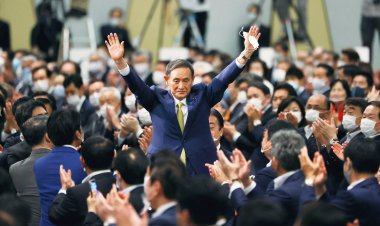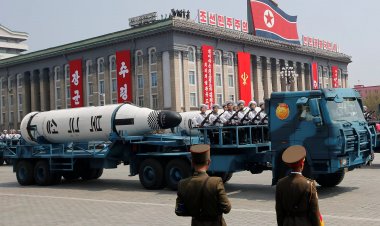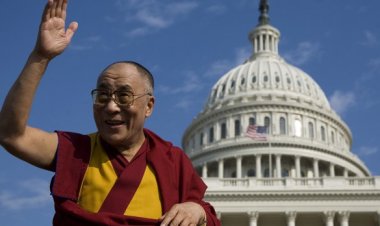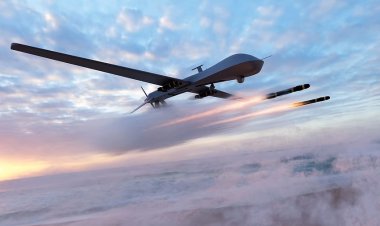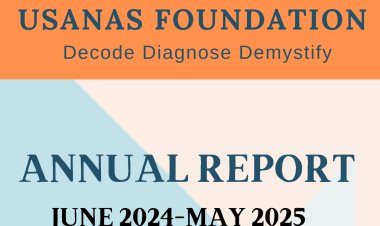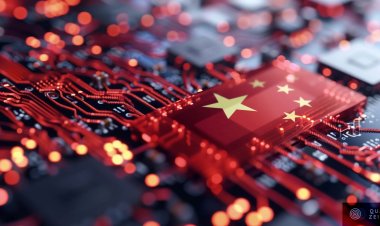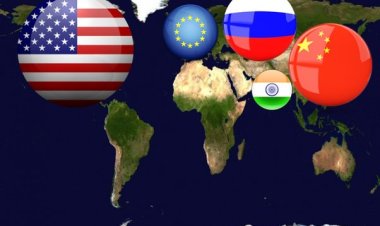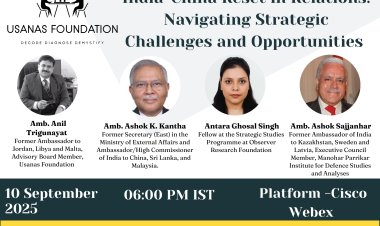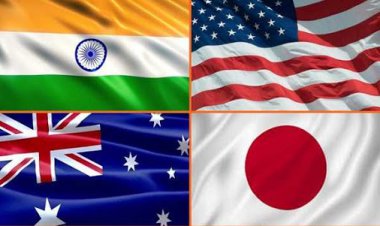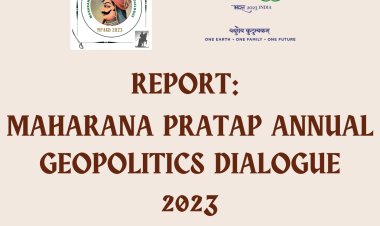China Set for a Dark, Turbulent, Ostracized and Bleak Future
A deconstruction of the real capabilities of a deranged power living with 18th-century expansionist values in the 21st century.
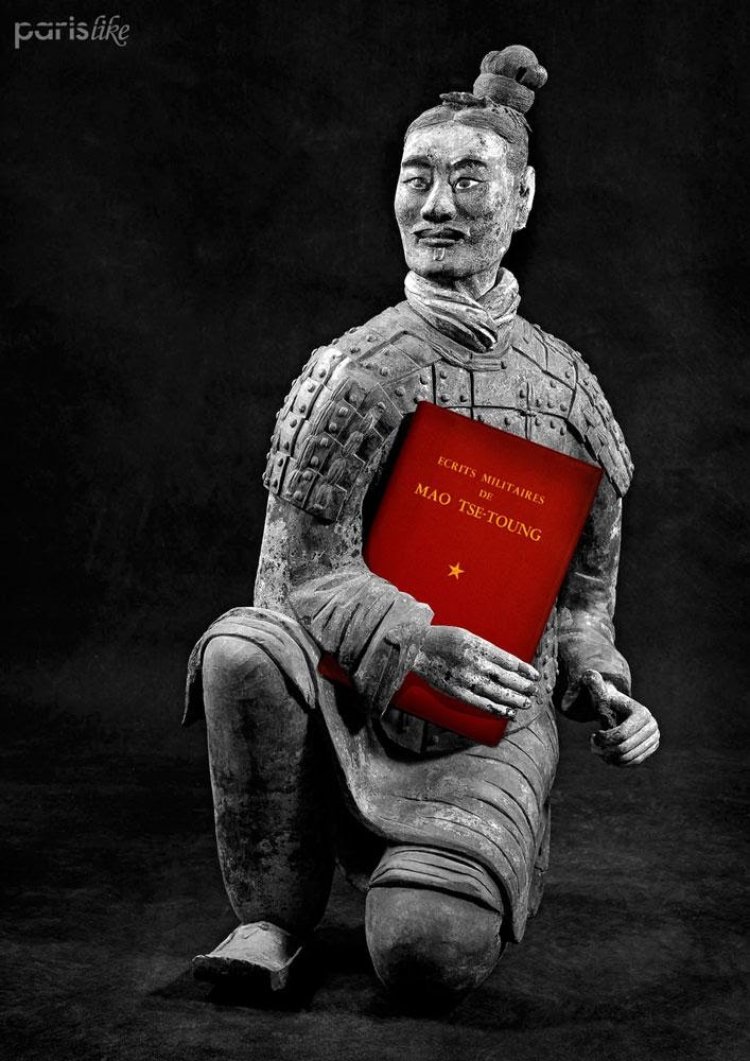
Commentary
By Abhinav Pandya
The tremors of the Covid pandemic have shaken the world out of its deep slumber about China’s peaceful rise. The psychological horrors that accompanied uncontrollable death counts across the globe, Beijing’s wolf-warrior diplomacy characterised by aggressive arm-twisting and threatening those who questioned its role in the origin and the spread of the pandemic; coupled with Beijing’s offensive posturing in the South China Sea, and its aggressive border incursions in Ladakh have ultimately made the world come to terms with the uneasy presence of a new bully which seeks to redefine the world-order, value system, alter the geography and hijack the global institutions to reclaim its medieval glory; as if the world never moved beyond 17th century, waiting for the Middle Kingdom to rise again and lead.
Unwarranted pessimism among western strategic scholars
International Relations scholars are busy making doomsday predictions. In particular, the American IR community seems to have lost the will and faith in its capacities. As early as in 1990, Stephen Scholossstein declared the “end of the American century”. In 2015, while forecasting the advent of the “multiplex” world, Amitav Acharya wrote off the American power. With Donald Trump’s ascendancy to power, the US strategic community announced its suicidal entry into depression and, more or less, unanimously affirmed that the US was doomed, and its leadership role was over. The quixotic President shocked the strategic community with quixotic ideas of untimely withdrawal from global leadership, erratic changes in the White House, and anti-evolutionary theories about Covid lockdowns and masks, confirming their beliefs of the American sky fall and the inevitability of the entrenchment of the world order with Chinese characteristics. Notably, Eliot A. Cohen wrote that Trump’s re-election would set in a permanent decline.
Americans have voted Trump out; Joe Biden is more or less confirmed as the next US President. However, the pessimism in the US strategic community hardly seems to be ending. Despite a bipartisan consensus on China being a threat number one to US’ global leadership, one hardly comes across voices suggesting a fast-track, firm, practical, and concrete strategy to contain China, which is the primary takeaway from this piece. The US intelligence establishment still seems to view the world through the cold-war prism. Instead of a strong and clear vision to contain China, Brookings’ Senior Fellow, Cheng Li, in his Foreign Affairs article, was lamenting that “resettling the US-China relations will not be easy”. No doubt about that; however, as John Maynard Keynes said, “The difficulty lies not so much in developing new ideas, but in escaping from the old ones,” the priorities need restructuring—resettling with a primary focus to contain China without having to fall into the old cold-war ideological framework.
In the same vein, Ambassador Hardy’s book “China vs. The US: Who Will Prevail?” examines the dimensions of the total national power of the US and China comparatively. Comparing the power dynamics of the waning superpower and the so-called rising Middle Kingdom along with six parameters, Dr Hardy argues that China has challenged the US too hard and too soon. However, for the US, it is too late to contain China. Ambassador Hardy argued that unlike the cold war between the US and the USSR, the one between China and the US is not that of ideology; instead, it is about efficiency. Moreover, the democratic system, with its multiple faults and the concomitant inefficiencies, will be outsmarted by China’s autocratic but “responsive” and efficient system. Further, he says that China will soon catch up to the US in military power and technology, and America’s nuclear superiority will only be of theoretical value.
On closer scrutiny, it seems that most of such doomsday predictions are born out of flawed reasoning, insufficient or rather partial and biased understanding and explanation of the power dynamics between the US and China. The factors underlying such predictions merit a detailed study; however, it is beyond this article’s scope. If Sun Tzu’s war doctrine is anything to go by, then anyone with a nuanced understanding of China’s war psyche will know that the Chinese believe in winning the war without fighting. Hence, such doomsday predictions are precisely what they look for to entrench the idea of China being a legitimate and natural world power with a glorious civilizational heritage in the global sub-consciousness. Hence, it is imperative to analyse, deconstruct, and debunk some of these predictions critically.
Is China a world power or an over-ambitious expansionist state that exposed itself too early?
There is no denying that China’s growing strategic footprint, military prowess, manipulation of international institutions, technological advancement, control over the supply chains, and robust financial clout indeed make it an emerging force to reckon with. Its muscular and aggressive force posture makes it a discomforting presence. However, it is not a Chinese century yet.
Post-Covid, China’s deceitful expansionism, and revanchist ambitions stand exposed. Maybe China is not at its weakest moment, but it has shot in its foot by exposing itself too early. It is a critical juncture because the global alliance of democracies can still reverse the Chinese dream and spare humanity from the horrors of a world order with Chinese characteristics. What is needed is a realistic assessment of China’s comprehensive national power. While everyone talks of China being the biggest challenger to the United States’ might, India’s befitting response to Chinese incursions in Ladakh has raised severe doubts about China’s status as the unquestioned regional superpower, let alone its claims of being a global leader.
When India abrogated the constitutional status of Jammu and Kashmir by abrogating Article 370, in a debate following the Kashmir measure, Home Minister Amit Shah made a bold statement of India’s intent to bring back Pakistan Occupied Kashmir and Aksai Chin. China continues with false claims to the Indian territory of Ladakh, a part of J&K, registered its opposition to India’s decision. Interestingly, China, which claims to be a global surveillance and intelligence superpower, failed to predict India’s historic decision on Kashmir despite several indications given by amateur security analysts in various commentaries and analytical pieces. In April 2020, the People’s Liberation Army carried out incursions in Ladakh, which, according to dominant global media houses, was in reaction to Delhi’s Kashmir move. However, there is much evidence to refute this assertion as China has always been expansionist.
India’s new strategy of “the best defence is a good offence,” the capacity build-up at Indian frontiers has agitated the Chinese and resulted in their aggressive move across the Line of Actual Control. However, it appears that Xi Jinping failed in his mission. Despite the hurdles and vulnerabilities caused by the Covid-19 pandemic, Indian forces not only stopped the Chinese in their tracks but also occupied some strategic heights, now claimed by China. In the Galwan skirmishes, Indian Army personnel killed somewhere between 45 to 60 Chinese soldiers, which embarrassed the self-proclaimed superpower so painfully that it chose to hide the exact casualty figures. The current position is that both the Armies are stranded in the Himalayan heights, where it will be snowing soon. Prime Minister Narendra Modi, and his Defence Minister, Rajnath Singh have warned China in clear terms that India will not cede an inch and CDS General Bipin Rawat categorically stated that war is an option in case China does not mend its ways.
It seems that PM Modi is aware of the importance of posturing better than the US in dealing with China. On 14 November 2020, PM Modi, in military gear, typically uncharacteristic of former Indian Prime Ministers who preferred signalling Gandhi’s peace and non-violence through their white dhoti-kurta attires, roared that if India’s resolve is tested, enemies will face harsh retaliation. The way the Chinese are negotiating with Indians in no way presents them as a superpower. Instead, they come out as sceptical neighbours who are paranoid about a possible advancement of Indian forces along the LAC.
During the initial Covid-19 outbreak in Wuhan, India’s neighbours Sri Lanka, Maldives, Nepal, Bangladesh and Myanmar looked up to Indian leadership to negotiate an evacuation strategy with the Chinese. That is a clear indication of India being a responsible regional leader rather than a regional hegemon. Recently, China tried to expand its geostrategic footprint in Nepal to realise that India’s Research & Analysis Wing outsmarts them in the Indian subcontinent. After the visit of R&AW chief, Samant Goel, Nepali leaders affirmed their faith in India-Nepal historic friendship. On top of it, the Nepalese army conferred the title of an honorary commander to India’s commander-in-chief General M.M. Naravane.
Unverified and doubtful military capabilities
Undoubtedly, China has made significant strides in ICBM technology, developed highly mobile land and submarine-based nuclear missiles, drones, and made substantial investments in artificial intelligence and robotics. Their quality remains to be tested. Nevertheless, China still has a long way to match America’s capabilities and technological prowess. China’s initial progress in technology hinged on stealing western technological secrets and reverse engineering. Though they progressed and emerged as a manufacturing powerhouse, their status in state-of-the art-weaponry remains unverified. Their weapons have not been tested anywhere except that Kashmiri terrorists mostly use Chinese Norinko Pistols and China-made AK 47. Indian Security Forces’ (SFs) veterans serving in the valley informed the author that Chinese pistols and rifles used by Kashmiri terrorists fail to impress high-grade weaponry. It appears that automatic rifles used by Sinaloa and Columbian drug cartels have a better quality than the Chinese weapons used by terrorists in Kashmir. According to Bertil Lintner, China sought to leverage India by arming Northeast insurgent groups with obsolete Chinese weapons, directly or indirectly. In both cases, it can be observed that India’s SFs have effectively crushed the militancy.
Interestingly, nowadays, it is the police force at the forefront of counter-insurgency operations, neutralizing the militants without much effort, which further explains the quality of Chinese-weapons. Undoubtedly, they are excellent for terrorist operations, insurgency, and low-grade sabotage; however, their efficacy in a conventional war remains yet to be tested. There are enough reasons to predict a bleak future for China in technology. Until recently, it was easy for China to steal and imitate western weapons’ innovation and technological know-how as it pursued a strategy of deception and deceit under the banner of “peaceful rise”. Lately, with hawks like Mike Pompeo assuming key positions in the White House, there is a profound sense of awareness about China’s intellectual theft from consumer goods to military technology and a willingness to curb it. It will be challenging for China to steal western technology in the future as it stands exposed. The US administration has already taken several measures to counter China’s intellectual theft, starting with a ban on Huawei and banning PLA officers’ admissions into prestigious American universities.
Besides, the Chinese Army is a conscription Army, unlike India’s volunteer Army. Also, reports suggest that the Chinese Army is a highly politicized institution and lacks professionalism. A recent video showing low morale and pessimism among young Chinese soldiers deputed on the Indian border gives critical indications about the pernicious effects of recruiting by force. The Chinese Army has not fought any war in the last several decades, whereas the Indian, US and the armed forces of other NATO countries are battle-hardened. Further, the Sun Tzu war doctrine believes that the wars should be won without fighting, and the armies should march in victory parades only. Knowing this weakness, what if India or an alliance of democratic countries engage China in a war? Maybe China will collapse and capitulate without much serious fighting. What if Japan starts militarizing? Japan is one of those countries which feels the threat from revanchist China and does so quite justifiably. Given the threat perception, it is likely to militarize itself soon, and in technological prowess, Japan’s credentials hardly need any elaboration. They have the capabilities and the right technological know-how to make fifth-generation fighter jets and nuclear weapons whenever they want.
All alone; no friends for a bully
Who stands with China today? China’s BRI is facing violent resistance in Gilgit-Baltistan and Balochistan. Pakistan has more or less turned into a Chinese colony supported by the minuscule elites that include the Army top brass and politicians. There are serious reports of an emerging groundswell against Chinese interference in Pakistan. In Central Asia, China’s BRI is held by a bunch of corrupt dictators in lieu of Chinese support and supply of high-grade surveillance equipment. In the Arab world, powers like Saudi Arabia, UAE and Kuwait are with the US. So who is with China except for many rogue and terrorist regimes—heavily Islamised Turkey, Iran, North Korea, Pakistan, and maybe Afghanistan if the Taliban comes to power? All these four states are facing sanctions for sponsoring terrorists and are the world’s most disrespected nations. Russia is not sure of aligning with China in the event of a war. Recently, in the India-China stand-off, India’s historical ties with Russia prevented it from openly siding with China.
Globally, since the Covid pandemic, China stands as the most abused and disrespected country, along with those international institutions like the World Health Organization, which allegedly did the cover-up job for China and put the entire human race at peril. Popular opinion across the globe holds China accountable for the origin and the spread of the pandemic. Heads of nations have demanded an investigation into China’s role in the origin and spread of the Covid. Beijing has lost its goodwill and reputation and is unlikely to get it back. The resentment against China in India is at its peak. China’s Confucius Institutes, entities accepting Chinese investment, and thinkers eulogizing China are trolled and condemned as spies and anti-nationals. Government of India has banned Chinese apps and instituted an inquiry against several organisations and academic institutions receiving Chinese funding.
The Quad, the group of democracies like India, Australia, Japan, and the US, has touched new heights, and it appears that if Chinese expansionism continues, it can be appropriated into a formal military alliance. India’s three foundational agreements signed with the US, i.e., LEMOA (Logistics Exchange Memorandum of Agreement), BECA (Basic Exchange and Cooperation Agreement), COMCASA (Communications Compatibility and Security Agreement), and joint naval exercises with Quad countries indicate a lot about the future of the Quad.
Frustrated and friendless among G20 states, China is threatening the countries which demand an inquiry against its pandemic role. In Europe, its wolf-warrior diplomats are threatening countries with abusive language. Are these the signs of a world power or an entity which is exposed, cornered, condemned, and ostracised? China also tried to sell its story of successfully containing Covid; however, there are hardly any buyers. Instead, investigations into what China did with Covid patients may lead to horrifying revelations of brutalities of a deranged power living with 18th-century expansionist values in the 21st century. Internally, CCP’s crises and leadership struggles are hardly known to the external world. For now, China seems to be in the powerful grip of President Xi Jinping, but for how long? How long can a person or single party-centric system survive? It is believed that single-party-based systems have a lifespan of seven decades. The future of Jinping and CCP is something that the global strategic community should seriously ponder over.
CCP’S China: Culturally uprooted and scores of domestic challenges
The domestic insurgencies and resentment in Tibet, Uighur and Mongolia will come to haunt China sooner or later. The near-dead Tibet’s independence is back on the table; after the passage of the Tibet Reform and Policy Act (2019) and the appointment of Robert Destro as a special envoy to Tibet by the Donald Trump administration. There is a growing demand for the recognition of Tibet as an independent country in India and the US. In India, there has been a flood of webinars and virtual discussions recommending the government to recognise Tibet and Taiwan as sovereign independent entities or at least to expand the existing ties.
China undoubtedly has made substantial human capital investments in the education sector; however, the Communist Party’s dictatorship has not allowed the growth of creative and innovative minds in China. The education system does not support freedom of expression and objective and critical inquiry. Even today, the US remains the most sought after education destination for Chinese students. In the domain of soft power or cultural influence, the West has an overwhelming sway over the world’s citizens. Interestingly, China’s upper middle class seems to be obsessed with American culture. In almost all prestigious US universities, the Chinese form the largest contingent of international students.
In China, CCP seems to be turning history upside down. Although the party sends its members to the West to study scientific advancement that they have achieved through freedom of expression and free-market capitalism, it remains obsessed with the namesake of being a communist regime to legitimise the one-party rule. The CCP ideologues once dumped the glorious cultural and religious heritage of China premised on Buddhism, Taoism, and Confucianism into the trashcan of history. Now it wants to revive the Middle Kingdom of the Hans.
In searching for the “Chinese Character,” Beijing is digging out mythical dynasties from their graveyards. It has gone on a spree to get countless heaps of stones declared as UNESCO heritage sites, and Beijing for sure knows the power of guanxi (Chinese term for nepotism and bribery) in getting its way. How such things are arranged can easily be explained when one explores more about how China manages to put its men in WHO, who end up clearing the name of China from holding culpable of its actions. Also, it may be interesting to find out how China’s friends can help get Pakistan, Somalia, and Saudi Arabia in the UNHRC and declare despots like Robert Mugabe and Xi Jinping as UN goodwill ambassadors.
It may be a bit far-fetched for CCP to revive and rejuvenate ancient China’s legacy and history, which was crushed during the Cultural Revolution and the Great Leap Forward. Moreover, CCP’s tryst with communism is also long dead. Hence, in effect, China has no cultural legacy left, but for Han chauvinism. China’s dictatorship model of governance, even with all its big dams, sky-rising condos, and metro rails, will always be remembered as the most inhuman, barbaric, and anachronistic treatment of human beings and not an ideal replacement for the Anglophone-led liberal governance model.
Many western scholars are hypersensitive about the vertical and horizontal faultiness that mar the US political and economic system. However, it seems that such over-sensitivity comes from their obsession with American exceptionalism and arrogance. Like any other human society, the West also has a history of frictions, diversity, and internal conflicts. Nevertheless, the West has a far longer and successful experience of dealing with internal faultiness and surviving through democratic ways and means. On the contrary, the last 70 years of CCP’s history is full of massacres of millions in the Cultural Revolution, the Great Leap Forward, the horrors of the Tiananmen massacre, the brutal crushing of Tibetan rebellion, the detention camps for Uyghurs, the violent suppression of Hong Kong protestors and the illegitimate takeover of Hong Kong, should be more than enough for keen China watchers to understand the fragility of CCP-led China and abuse of power.
Hostile world community and ostracised future
All this while, China could rise because it could successfully deceive the world with the notion of peaceful rise. Western societies failed in comprehending the subconscious layers of the Chinese geostrategic mind-set. However, it is no more the same. With its aggression and muscular foreign policy, Beijing has exposed itself. Finally, after the departure of Trump, the Biden administration is expected to be back into the international fora with an ardent passion for multilateralism and liberal values. China could hijack the international institutions and wean away European countries with its economic heft only through bilateral ties, in the absence of US-led multilateralism. However, it will be increasingly difficult now as the US is expected to be back in the international arena to assume the leadership role.
Lastly, American scholars had mistaken the US-led world order to be US-only world order. They now realise that the US-led world order has created stakeholders, and they have stakes in sustaining protecting this world order. Those stakeholders are India, Australia, Japan, New Zealand, West European nations, and many others. Further, the values which the US-led world order espouses, such as democracy, liberalism, freedom of expression, and globalization, are inherent in the evolutionary genetics of human society. They are the natural and logical outcomes of the progress and growth of human consciousness. China and its cohorts like Turkey want to go back in time, which is an anti-evolutionary fantasy. It can only lead to collapse, shattering, and bloodshed.
As of now, China may not be as significant a threat to the liberal world order as we are projecting it. The strengthening of such perceptions will be immensely helpful to China in buying time to become an insurmountable geostrategic Goliath, and when the push comes to shove, to uproot the liberal world order. Maybe Beijing wants such narratives to float across to psychologically defeat the West, which is one of many of China’s unorthodox strategies.
Conclusion
What failed the US is its lack of a long-term strategic vision, wrong priorities, and futile investments. For example, the very thought that the forces of globalization, economic prosperity resulting from the integration with the liberal-world order will make the collapse of CCP and ushering in of democracy in China by popular will a necessity, was itself flawed. Similarly, the western world failed in dealing with political Islam and jihadi terrorism, not because they were weak, but because they lacked the vision to differentiate between friends and foes. IR experts from Harvard, Fletcher, and Stanford advised successive US governments to dump billions of taxpayers’ dollars in resolving the intractable Afghanistan, when even half of that expenditure could have successfully dismantled the Pakistani Army, the fountainhead of terrorism in South Asia.
Often, in the writings of the western scholars about China’s disturbing rise, one is made to believe in the perceived notion of western nations being the epitome of ethics and morality, veiling the unethical means that they have restored to towards achieving their respective national interests. The West has its disproportionate share of propping up and accommodating dictators, staging regime changes through orchestrated revolts, covert operations, and political assassinations. Hence, the reluctance to counter the unfair Chinese game through unethical means is unfathomable and unnecessary. Rather than waiting for a democratic transition of power in China, the western alliance must wake up to the brutal reality of what is happening in Hong Kong. The liberal world order, values, actors, and functioning were an outcome of human faculties. Any apprehension about containing China through unethical ways could only result in perpetual fear and misery. All said and done, the Liberal system is also robust enough to challenge the emerging world order with “Chinese Characteristics,” all it takes is the political will.
It is high time the US learned from its mistakes and short-sightedness. The US should stop whining about the decline of the liberal world order and take active measures in restoring it. Our values are not dead yet and are resilient enough to outlive psychologically deranged and lunatic dictatorships. To sustain the internationally cherished values of human rights, the dignity of life, and fair practices, there is a need to contain China and its unruly authoritarian conduct. It must begin with calling and pursuing an independent, intensive and rigorous inquiry of the role of China in origin and spread of the Covid, and if found guilty, Beijing must be slapped with crippling sanctions, condemnations, and stripped of the UNSC Permanent Member status. If not done now, then humanity must brace itself for something barely liveable with the Chinese characteristics of deceit, torture, forced disappearances, purges, and concentration camps with excellent facilities for sterilization and brain restructuring.
Abhinav Pandya is the Founder and CEO of Usanas Foundation, an India-based geopolitics and security affairs think-tank. He has authored “Radicalization in India: An Exploration (Pentagon Press,2019).”
Disclaimer: This paper is the author’s individual scholastic contribution and does not necessarily reflect the organisation’s viewpoint.
This article was originally published on the Sunday Guardian

